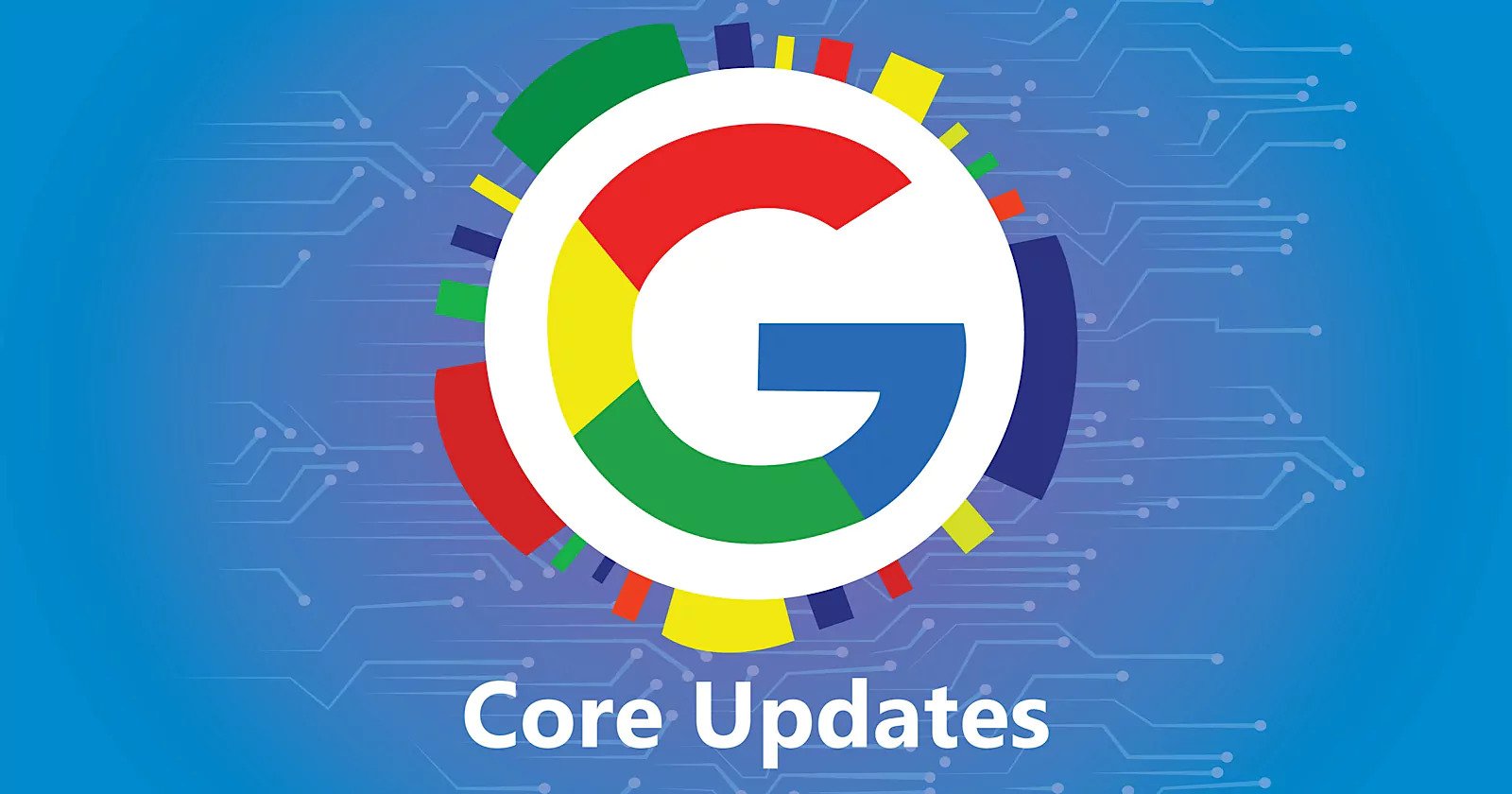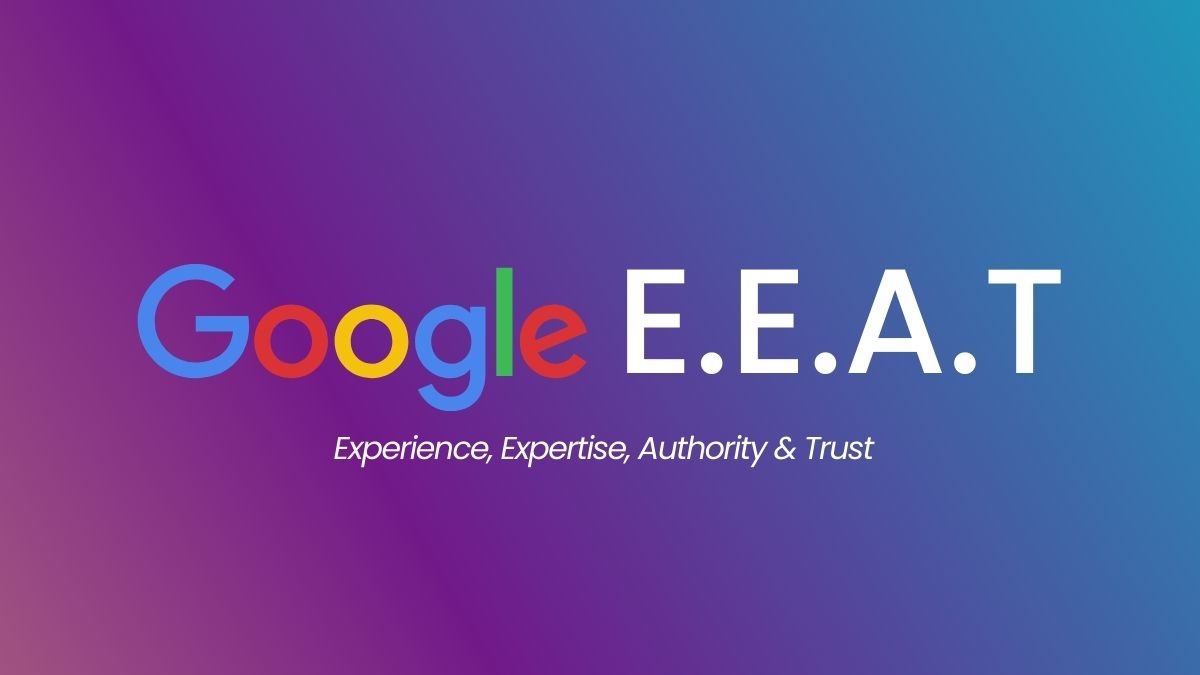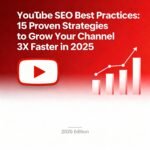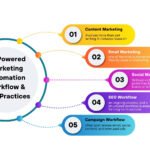The digital landscape is in constant flux, driven significantly by the continuous evolution of search algorithms. Google’s core updates represent the most profound shifts in this environment, designed to refine how helpful and reliable content is presented to searchers. The Google June 2025 Core Update, following closely on the heels of the March 2025 update, marks another critical juncture for website owners and digital marketers. These system-wide adjustments, rather than targeting specific sites, are broad in nature, recalibrating Google’s assessment of content quality and relevance across the entire web.
For businesses heavily reliant on organic search traffic, the implications of a core update can be substantial. Past updates have demonstrated the capacity to cause significant drops in website visibility, potentially impacting profitability and even the long-term viability of an enterprise. In some instances, the effects of a Google core update have been observed to be more severe for a business than an economic recession. The Google June 2025 Core Update, therefore, is not merely another algorithmic tweak; it is a continuation of Google’s aggressive efforts to elevate high-quality, user-centric content while systematically reducing the visibility of unoriginal or search-engine-first material. This strategic direction was notably evident in the March 2024 update, which resulted in a remarkable 45% reduction in low-quality content within search results, surpassing Google’s initial expectations. Navigating such a powerful shift requires a calm, data-driven, and strategic approach, rather than reactive, drastic changes.
Understanding Google Core Updates: Insights for the June 2025 Rollout

As an authority in the SEO space, I’ve observed Google’s core updates for years, and I can tell you they are fundamentally designed to fulfill Google’s overarching mission: to present the most helpful and reliable results to searchers. These updates are akin to a continuous reassessment of the web’s vast content, much like updating a list of top recommendations. As new content emerges and existing content evolves, Google’s systems are refined to keep pace. Content that was once highly ranked might see its position shift, not necessarily because it has become “bad,” but because other content is now deemed “better” or more aligned with evolving user needs and quality standards. These changes are broad, impacting the entire search ecosystem rather than singling out individual websites or specific pages. They represent a recalibration of the underlying algorithms that determine how content is understood, evaluated, and ranked.
Distinguishing Core Updates from Other Algorithm Changes
It is important to differentiate core updates from the myriad of other changes Google implements. While Google’s search algorithms are updated almost daily, core updates represent significant, broad modifications. Unlike minor, daily tweaks or more specific updates such as spam updates or product reviews updates, core updates involve fundamental shifts in how content quality and relevance are assessed.
A notable trend in recent years is the increasing frequency of core updates. Google released four core updates in both 2023 and 2024, a significant increase compared to only two in 2022 . This accelerated pace, coupled with instances where updates occur in rapid succession such as the December 2024 update rolling out just a week after November’s suggests a higher level of algorithmic agility . Google’s explanation that “different core systems are always improving” indicates a modularity in its algorithm architecture, allowing for more frequent and targeted refinements of specific components without requiring a monolithic overhaul . This enhanced agility means Google can respond more swiftly to changes in web content, user behavior, and spam tactics, necessitating continuous monitoring and a proactive, adaptive strategy from SEO professionals. The era of “set it and forget it” SEO is increasingly obsolete; constant vigilance and unwavering adherence to quality signals are now paramount for sustained visibility in a rapidly changing search landscape.
Understanding Rollout Duration and the “Google Dance”
Core updates typically do not roll out instantaneously; they usually take “a few weeks to roll out”. Recent examples illustrate this, with durations ranging from a rapid 6 days for the December 2024 update to a protracted 45 days for the March 2024 update. During this rollout period, search results can exhibit significant volatility, a phenomenon often referred to by SEO experts as the “Google Dance“. This “dance” manifests as wild, temporary fluctuations in rankings, which can be misleading.
The temporary volatility observed during a core update rollout can be seen as a strategic element in Google’s design. By creating transient shifts in rankings, Google effectively tests the resilience of websites and discourages reactive, short-sighted SEO tactics. Website owners who panic and implement unstrategic changes based on incomplete or misleading data might inadvertently undo positive elements or make adjustments that are counterproductive in the long run. Conversely, those who maintain a calm, data-driven, and long-term approach, focusing on fundamental quality, are better positioned to weather the storm. This period of flux, therefore, serves as a test of an SEO’s strategic patience and adherence to best practices, ensuring that only genuinely robust and user-focused sites maintain their long-term standing. Consequently, a critical piece of advice during a core update rollout is to avoid making “huge, radical changes” to a site, as this can be a significant gamble that negatively affects aspects of content Google might actually approve of . It is generally recommended to wait until the update has fully completed its rollout before making significant adjustments.
Key Focus Areas for the Google June 2025 Core Update: E-E-A-T, Helpful Content & Technical SEO

Google’s core updates consistently emphasize a set of foundational principles that guide content quality and user experience. For the Google June 2025 Core Update, these areas remain paramount, reflecting Google’s ongoing commitment to delivering superior search results.
E-E-A-T (Experience, Expertise, Authoritativeness, Trustworthiness) in 2025
E-E-A-T continues to be a critical framework for Google’s content assessment, with a heightened emphasis on “Experience”. This framework helps Google determine the credibility and depth of content.
- Experience: This refers to the creator’s first-hand knowledge of the topic. Demonstrating experience might involve providing original insights, case studies, testimonials, or personal accounts. For instance, a product review written by someone who has actually used the product, or a travel guide authored by someone who has visited the destination, exemplifies this.
- Expertise: Content should be created by or clearly attributed to qualified professionals. This includes ensuring authors have relevant credentials and that their bylines reflect their subject matter authority.
- Authoritativeness: This signifies recognition as a go-to source within a specific niche. It can be demonstrated by linking to credible external sources and earning mentions or backlinks from other authoritative sites.
- Trustworthiness: This encompasses accuracy, transparency, security, and a clean link profile. Content must be fact-checked, reliable, and free from misleading information.
Enhancements to E-E-A-T have been a prominent feature of recent updates, ensuring that only “reliable, expert-driven, and trustworthy material ranks well,” particularly for important search queries.
Helpful Content Principles: The “People-First” Approach
The concept of “helpful content” is central to Google’s core updates. This refers to content created primarily for people, not for search engines. Google’s systems are continuously refined to “better understand if webpages are unhelpful, have a poor user experience or feel like they were created for search engines instead of people”. The ultimate goal is to reduce “low-quality, unoriginal content” and direct more traffic to “helpful and high-quality sites”. The March 2024 update, for example, significantly advanced this objective, leading to a 45% reduction in such content. This focus on helpfulness is directly tied to user intent, ensuring content clearly and effectively responds to user inquiries and adapts to their evolving demands.
The emphasis on E-E-A-T and “people-first” content are not merely distinct guidelines but rather converging principles that define Google’s quality assessment. E-E-A-T provides the fundamental framework for evaluating the credibility and depth of content, considering who created it, their experience, and its overall trustworthiness. “People-first” content, in turn, represents the direct outcome of successfully applying these E-E-A-T principles—content that genuinely serves the user’s needs and provides real value. If content lacks demonstrable experience, expertise, authority, or trustworthiness, it is inherently less likely to be perceived as truly helpful or user-centric. Therefore, focusing on building genuine E-E-A-T is the most direct and sustainable path to aligning with Google’s “people-first” philosophy and future-proofing against updates like the Google June 2025 Core Update. This implies a strategic shift from tactical SEO approaches, such as rigid keyword density, towards a more holistic content development strategy that builds authentic brand authority and fosters user trust.
Technical SEO & Page Experience: Core Web Vitals & Mobile-First
Technical performance remains a foundational element for search ranking, directly impacting user experience and search efficiency. Key areas include:
- Core Web Vitals: These metrics (Largest Contentful Paint, Interaction to Next Paint, and Cumulative Layout Shift) are crucial ranking criteria that prioritize a smooth and quick user experience. The continuous evolution of these metrics, such as the introduction of INP (Interaction to Next Paint) in 2023, underscores their ongoing importance.
- Mobile-First Indexing: With the increasing prevalence of mobile internet usage, Google primarily assesses and ranks websites based on their mobile versions. This necessitates a strong focus on mobile responsiveness.
- Common Technical Issues: Addressing issues like broken links or images, poor mobile responsiveness, duplicate title tags, missing meta descriptions, and incorrect canonical tags is vital for ensuring a technically sound website.
Content Quality & Relevance: Beyond Keywords
Google consistently favors “unique, well-researched, and high-quality content” over superficial or repetitive material. Core updates enhance Google’s ability to match search results to user queries by focusing on relevancy and a deep understanding of user intent. This means content should offer original insights, case studies, or testimonials to differentiate itself and provide genuine value to the user.
Combating Spam and Low-Quality Content
Core updates actively penalize “low-quality or spammy pages”. Specific targets include manipulative links, cloaking, hacked content, and auto-generated content. A crucial distinction is made regarding AI-generated content: while it is not inherently harmful, a “lack of human oversight and fact-checking can land pages in the spam category”. This highlights the enduring value of human involvement in content creation. Furthermore, Google’s algorithms are designed to detect if portions of a site are starkly different from other sections, adjusting site-wide signals accordingly, indicating a holistic quality assessment.
This nuanced stance on AI-generated content suggests that Google’s algorithms are becoming sophisticated enough to discern the intent and process behind content creation, not merely the final output. This directly ties into the E-E-A-T framework, particularly the “Experience” and “Trustworthiness” components. Artificial intelligence, by its nature, cannot possess genuine experience or guarantee factual accuracy without human input, review, and validation. This implies that while AI can be a powerful tool for efficiency and content generation, it cannot replace human expertise, judgment, and ethical considerations in content production. For SEO professionals, this means integrating AI responsibly, using it to augment human capabilities rather than replace them, and ensuring robust human review and fact-checking processes are in place to avoid falling into the “spam” category in updates like the Google June 2025 Core Update. It reinforces the “human-first” content mantra at a deeper, more refined level.
Post-Update Analysis: Identifying Impact from the Google June 2025 Core Update
When a Google core update rolls out, the immediate reaction for many website owners is often concern or panic. However, a methodical, data-driven approach is essential for accurately assessing any impact.
Initial Steps: Don’t Panic, Confirm Rollout Completion
The first and most crucial step is to remain calm . As I’ve discussed, core updates often involve a “Google Dance,” where search results exhibit temporary, wild fluctuations in rankings . Reacting impulsively to these transient shifts by making drastic, unstrategic changes can be counterproductive and potentially worsen a site’s standing . It is strongly recommended to wait at least a full week after the core update has completed its rollout before conducting a detailed analysis of site performance . Google’s Search Status Dashboard is the authoritative source for confirming the official start and end dates of any core update.
Leveraging Google Search Console for Data Analysis
Google Search Console is an indispensable tool for post-update analysis. The initial check should be for any manual actions, which indicate severe violations of Google’s guidelines . If no manual actions are present, the focus shifts to performance reports. Website owners should compare data from the week after the update completed with a week before it started rolling out. This comparison allows for a clear identification of changes in impressions, clicks, average position, and overall traffic . The filter functionality within Search Console is particularly useful for isolating positive or negative changes in top pages and queries, providing a granular view of the update’s specific impact . Analyzing different search types separately such as Web Search, Google Images, Video mode, or the News tab can further pinpoint where a drop might have occurred, allowing for highly targeted recovery efforts.
Utilizing Third-Party SEO Tools for Visibility & Rank Tracking
Complementing Search Console data, reputable third-party SEO tools like Semrush, Ahrefs, or Sistrix offer valuable insights . These tools can provide a quick “visibility overview,” helping to identify obvious, site-wide changes around the time of the algorithm update . Their rank tracking features are particularly useful for pinpointing specific keywords, landing pages, or content clusters that have experienced a significant decline in rankings.
Identifying Affected Pages and Queries: Small vs. Large Drops
The magnitude of any observed drop is critical for determining the appropriate response. A small drop in position, for example, from position 2 to 4, typically does not necessitate drastic action. In fact, making changes to content that is already performing well is generally advised against in such scenarios . However, a large, sustained drop in position, such as from position 4 to 29, warrants a deeper, comprehensive assessment of the affected content and the overall quality of the site . In these cases, it is important to evaluate the most impacted pages against Google’s self-assessment questions, which focus on helpfulness, reliability, and whether the content is people-first.
The strategic importance of post-update patience and data segmentation cannot be overstated. Hasty, reactive changes based on incomplete or volatile data, the “Google Dance” can exacerbate a site’s problems or obscure the true underlying causes of a ranking decline. Conversely, segmenting data by date, specific pages, individual queries, or different search types allows for a precise diagnosis of which parts of the site were affected and how. This methodical approach is not just about avoiding errors; it is about optimizing the recovery process. By accurately identifying what was affected and when, SEO professionals can avoid wasting valuable resources on irrelevant fixes and instead focus their efforts on the specific areas that Google’s algorithm re-evaluated negatively. This precision in diagnosis, enabled by strategic patience and detailed data segmentation, is critical for efficient and effective recovery, transforming a potential crisis into a targeted improvement opportunity.
Recovery Strategies for the Google June 2025 Core Update
Recovering from a Google core update requires a comprehensive and strategic approach, addressing various aspects of a website’s content, technical foundation, and authority signals. It is rarely about fixing a single isolated issue but rather about elevating the entire site’s quality.
Comprehensive Content Audit: Identifying Weaknesses
A thorough content audit is the starting point for recovery. This involves meticulously reviewing existing content, with particular attention to pages exhibiting low time-on-page or high bounce rates, articles under 500 words lacking clear structure or unique insight, and any duplicate or overly generic content. Each piece of content should be evaluated against Google’s self-assessment questions, which prompt an objective review of whether the content is truly helpful, reliable, and created with a “people-first” mindset . A content gap analysis can also be performed to identify topics that are either missing from the site or where competitors are providing more comprehensive or better-quality information, ensuring that the site fully addresses user intent.
Enhancing E-E-A-T Signals: Building Trust and Authority
Strengthening E-E-A-T signals is paramount for demonstrating credibility and authority.
- Experience: To showcase practical knowledge, integrate original insights, case studies, testimonials, or first-hand accounts directly into the content.
- Expertise: Ensure that content is written by or clearly attributed to qualified professionals. Updating author biographies with relevant credentials can significantly bolster this signal.
- Authoritativeness: Strive to be recognized as a leading source in your niche. This involves linking to credible external sources and actively seeking mentions or links from other authoritative websites.
- Trustworthiness: Content must be fact-checked, accurate, transparent, and kept up-to-date. Regularly reviewing and updating outdated information is crucial.
Technical SEO Deep Dive: Fixing Foundational Issues
Addressing technical issues is foundational for improving user experience and crawlability. Critical areas include:
- Broken Links and Images: These can hinder user navigation and signal neglect to search engines.
- Mobile Responsiveness: Ensuring the site functions flawlessly on all mobile devices is non-negotiable given mobile-first indexing.
- Metadata Issues: Correcting duplicate title tags or missing meta descriptions improves how pages are understood by search engines and presented in search results.
- Page Speed and Core Web Vitals: Optimizing for faster loading times and better interactivity (LCP, INP, CLS) is crucial, as page experience is explicitly linked to helpful content.
- Canonical Tags: Correct use of canonical tags prevents duplicate content issues from affecting rankings.
Competitor Analysis: Learning from Top Performers
Analyzing competitors, especially those who gained visibility following the update, provides invaluable insights . Benchmarking against these top performers involves examining their content quality, the strength of their E-E-A-T signals, their technical performance, and their link profiles to understand what Google is currently favoring . The objective is to identify how their pages might be doing a “better job of helping the searcher” and integrate these learnings into your own SEO strategy.
Link Profile Optimization: Quality Over Quantity
A clean and authoritative link profile is vital. Using tools like Ahrefs or Google Search Console, assess the quality of incoming links. Aggressively disavow spammy domains or paid links, as Google actively targets link spam. The focus should shift to building high-authority, natural backlinks through valuable content creation, such as guest posting on highly relevant sites, strategic public relations efforts, or publishing complex data studies that attract organic links.
Content Refresh and Re-optimization Strategies
Existing content can be a powerful asset for recovery. Update it with newer statistics, quotes, and fresh perspectives to maintain relevance and accuracy. Implement answer-based formatting, such as reverse FAQs, to directly address user queries and improve scannability. Enhance internal linking to improve site structure, distribute link equity, and facilitate user navigation. Explore keyword clustering and semantic SEO to cover topics comprehensively and demonstrate topical authority. For thin or low-value pages, consider merging or consolidating them into more robust, comprehensive resources to reduce the overall number of low-quality pages on the site.
The various recovery strategies—content audits, E-E-A-T enhancements, technical SEO, competitor analysis, link profile optimization, and content refreshing—are not isolated tasks but components of a holistic ecosystem. For instance, even if content is excellent, poor technical SEO (e.g., slow page speed) can negatively impact user experience, which Google values for “helpful content”. Similarly, weak E-E-A-T can lead to content being perceived as unhelpful or untrustworthy, regardless of technical soundness. Spammy links can undermine overall site authority, even if content is otherwise strong. Google’s algorithms, which check for “starkly different” sections of a site, suggest a comprehensive, site-wide quality assessment . Therefore, recovery from a core update is rarely about fixing a single issue; instead, it requires an integrated approach where improvements in one area amplify the effects of improvements in another. Google’s algorithms likely assess sites as a whole, meaning a weakness in one pillar can significantly hinder the performance of others. The “recovery playbook” must thus be treated as an interconnected ecosystem of strategies, not a mere checklist of isolated tasks, to build truly resilient and future-proof SEO foundations.
This leads to a fundamental shift in perspective: recovery from a core update is less about identifying and fixing “penalties” or “errors” in a traditional sense, and more about elevating the overall quality and user experience to surpass newly preferred content. Google’s past statements that “pages that drop after a core update don’t have anything wrong to fix” , coupled with the analogy that “restaurants that move down aren’t necessarily ‘bad’; there are just other restaurants that make your top 20”, underscore this evolution. Google’s mission is to present the best helpful and reliable results. If content drops in ranking, it is not necessarily “broken” or “penalized,” but rather Google has identified better alternatives to serve the user’s intent, or the competitive landscape has simply shifted. The recovery process is fundamentally about continuous improvement, striving for excellence in all aspects of content and technical delivery, and becoming the most helpful resource available, rather than merely patching up perceived flaws. This mindset shift is crucial for long-term SEO success in an environment of continuous core updates.
Building Future-Proof SEO Foundations: Long-Term Resilience
Ultimately, staying resilient in Google’s evolving search landscape requires a commitment to continuous, proactive SEO. This involves regularly publishing quality original content, building comprehensive topic clusters around key themes, and diligently maintaining the site’s technical health. The shift must be from reactive fixes to a strategic, “human-first” approach that inherently aligns with Google’s evolving guidelines. Transparent communication with stakeholders about the ongoing nature of SEO and the impact of continuous updates is also vital for managing expectations and securing resources.
Lessons from Past Google Core Updates: Preparing for June 2025

Understanding the patterns and impacts of recent Google core updates provides crucial context for anticipating and responding to the Google June 2025 Core Update rollout. The years 2023 and 2024 saw an accelerated pace and increased complexity in Google’s algorithmic adjustments.
March 2024 Core Update: Google’s “Biggest Ever”
The March 2024 core update was described by Google as its “largest core update in history,” taking a significant 45 days to fully roll out, from March 5 to April 19. This update involved refining multiple core ranking systems to better identify webpages that were unhelpful, offered a poor user experience, or appeared to be created primarily for search engines rather than people . Its impact was substantial, leading to an impressive 45% reduction in low-quality, unoriginal content in search results, surpassing Google’s initial projections . This update set a strong precedent, signaling Google’s unwavering commitment to quality and user-centric content.
August 2024 Core Update: Addressing Publisher Feedback
The August 2024 core update, which rolled out over 19 days from August 15 to September 3, was particularly notable because Google stated that it “took into account the feedback Google heard since the September 2023 helpful content update that seemed to have a negative impact on many small and independent publishers” . This acknowledgment indicates that while Google’s core principles remain firm, the company does observe and potentially fine-tune its algorithms based on real-world outcomes and community feedback. This suggests a degree of responsiveness to the broader SEO ecosystem. This instance implies that Google, while maintaining its core mission, is not entirely impervious to the real-world consequences of its updates on the broader publishing landscape. A widespread negative impact on legitimate publishers could affect the diversity and quality of content available for indexing, which ultimately harms Google’s own ecosystem and its ability to provide comprehensive results. For SEO professionals, this means that while adhering to best practices is paramount, collective industry observation and feedback on broad impacts can sometimes influence future algorithmic adjustments, even if indirectly. It highlights the dynamic interplay between Google’s updates and the SEO community’s adaptation and feedback, fostering a more collaborative, albeit indirect, relationship.
December 2024 Core Update: Rapid Succession
The December 2024 core update was surprising in its timing, commencing just a week after the November 2024 core update had completed, and concluding remarkably quickly within six days . Google’s explanation for this rapid succession was that “different core systems are always improving” . This reinforces the idea of a modular approach to updates, where specific components of the algorithm can be refined independently and deployed quickly, contributing to the overall agility of Google’s search ranking systems.
Key Learnings from Volatility and Recovery Patterns
The overarching trend from 2023 and 2024 is one of increased frequency and complexity in core updates . Across all these updates, the consistent emphasis has been on E-E-A-T, helpful content, and robust technical SEO as the enduring signals of quality. The volatility observed during these rollouts, often referred to as the “Google Dance,” underscores the importance of patience and data-driven analysis rather than reactive changes . The consistent message is that proactive, continuous adherence to Google’s quality guidelines and a “human-first” content strategy is the most effective long-term approach for building resilience against evolving algorithms.
Conclusion: Beyond the Google June 2025 Core Update
The Google June 2025 Core Update, like its predecessors, underscores the dynamic and continuously evolving nature of search engine optimization. It is not an isolated event but a continuation of Google’s relentless pursuit of delivering the most helpful, reliable, and user-centric search results.
Summary of Key Actions for Google June 2025
For website owners and SEO professionals, the immediate aftermath of a core update demands a calm, data-driven assessment. Patience is key, as temporary fluctuations (the “Google Dance”) can be misleading . A granular analysis of performance data in Google Search Console and third-party tools is crucial to accurately pinpoint affected areas . The core pillars of recovery remain consistent: rigorously enhancing E-E-A-T signals, ensuring all content is genuinely helpful and people-first, meticulously optimizing technical SEO foundations, and maintaining a clean, authoritative link profile.
The Continuous Journey of SEO
SEO is no longer a series of reactive fixes in response to discrete algorithmic events. Instead, it is an ongoing process of adaptation, continuous improvement, and proactive alignment with Google’s evolving quality signals. The accelerated pace and increasing complexity of core updates, as observed in 2023 and 2024, are the new normal . This environment necessitates constant vigilance and a strategic approach that anticipates change rather than merely reacting to it.
Embracing a Proactive, Human-First Approach
Ultimately, the most effective “future-proof” SEO strategy involves building a truly valuable, user-centric website that consistently demonstrates E-E-A-T and provides a superior user experience. This means shifting the mindset from merely chasing algorithms to genuinely serving users. By focusing on creating high-quality, original content that addresses user needs comprehensively, maintaining a technically sound website, and fostering genuine authority in its niche, a website inherently aligns with Google’s long-term mission. This proactive, human-first approach is the most reliable path to sustained organic visibility and resilience in Google’s ever-evolving search landscape.
Frequently Asked Questions on Google June 2025 Core Update
- What is a Google Core Update? Google Core Updates are significant, broad changes to Google’s search algorithms and systems, designed to enhance the ranking of information and present the most helpful and reliable results to searchers . They do not target specific sites but rather recalibrate how content quality and relevance are assessed across the entire web. The Google June 2025 Core Update, for instance, aims to better surface relevant and high-quality content.
- How often do Google Core Updates happen? Google typically releases several core updates each year. In both 2023 and 2024, Google launched four core updates, a notable increase compared to only two in 2022 . This accelerated pace, sometimes with updates in rapid succession, indicates Google’s continuous refinement of its core systems.
- How long does a Google Core Update take to roll out? Core updates usually take “a few weeks to roll out” . Recent examples show durations ranging from a rapid 6 days for the December 2024 update to a protracted 45 days for the March 2024 update . During this period, search results can exhibit significant volatility, known as the “Google Dance”
- What is E-E-A-T and why is it important for the Google June 2025 Core Update? E-E-A-T stands for Experience, Expertise, Authoritativeness, and Trustworthiness. It’s a crucial framework Google uses to assess content credibility and depth. For the
- Google June 2025 Core Update, demonstrating E-E-A-T is paramount, especially “Experience,” which refers to the creator’s first-hand knowledge of the topic. High E-E-A-T signals to Google that your content is reliable and expert-driven, particularly for important search queries.
- What should I do if my site is affected by the Google June 2025 Core Update? First, remain calm and avoid making drastic changes during the rollout . Wait until the update has fully completed, then use Google Search Console to compare performance data (impressions, clicks, average position) from before and after the update . Identify specific affected pages and queries, and conduct a comprehensive content audit, focusing on helpfulness, reliability, and E-E-A-T .
- Can I recover from a Google Core Update? Yes, recovery is possible with a strategic and methodical approach . It involves a comprehensive content audit, enhancing E-E-A-T signals, fixing technical SEO issues, analyzing competitors, and optimizing your link profile. The goal is to elevate your site’s overall quality and user experience to align with Google’s evolving standards .
- What does Google mean by “helpful content”? “Helpful content” refers to content created primarily for people, not for search engines. Google’s systems are continuously refined to identify and reduce “low-quality, unoriginal content” and direct more traffic to “helpful and high-quality sites”. This focus ensures content effectively responds to user inquiries and provides genuine value.
- What are Core Web Vitals and their role in the Google June 2025 Core Update? Core Web Vitals are key metrics (Largest Contentful Paint, Interaction to Next Paint, and Cumulative Layout Shift) that measure a website’s user experience in terms of loading, interactivity, and visual stability. They are crucial ranking criteria, and optimizing them is vital for ensuring a smooth and quick user experience, which directly impacts how Google perceives your content’s helpfulness.
References
- https://developers.google.com/search/updates/core-updates
- https://developers.google.com/search/updates/core-updates
- https://www.stylefactoryproductions.com/google-core-update-recovery
- https://blog.google/products/search/google-search-update-march-2024/
- https://searchengineland.com/google-algorithm-updates-2024-449417
- https://morningscore.io/google-e-e-a-t/
- https://skillfloor.com/blog/google-algorithm-updates
- https://www.stanventures.com/blog/google-algorithm-updates/
- https://www.gtechme.com/insights/google-core-update-recovery-guide-2025/
- https://developers.google.com/search/blog
- https://searchengineland.com/google-core-update-what-to-do-439940
- https://www.embarque.io/post/semantically-related-words
- https://b2bdigitalmarketers.com/blog/lsi-keywords/
- https://seo.ai/blog/nlp-for-seo
- https://searchengineland.com/google-algorithm-updates-2023-recap-435846
- https://www.hikeseo.co/learn/technical/lsi-keywords













